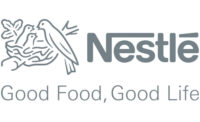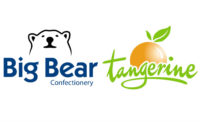
Whack! That’s usually not the first sound one associates with eating chocolate. A crisp “snap” usually comes to the forefront, followed typically by a “Mmmm!”Ferrara Chocolate’s Breakable Chocolate Balls, nevertheless, require a good whack before the tasting and sharing can begin.
Then again, if one continues to play the association game, Ferrara Pan Candy Co., which producesFerrara Chocolatebrand products, doesn’t often come to mind when one thinks chocolate. Sure, customers and friends would often receive panned chocolate almonds from the company during the Christmas period, but that was strictly a seasonal anomaly, not a full-time business.
But as detailed inCandy Industry’s June 2009 issue, that all changed when Sal Ferrara, president and ceo, launched the Ferrara Chocolate line at the All Candy Expo last year.
In becoming a distributor for Kraft Foods’ specialty line of chocolates in 2006, Ferrara quickly realized the “golden opportunities” in the U.S. chocolate market. Thus, when Kraft elected not to renew its distribution contract with Ferrara Pan Candy Co. at the end of 2008, Ferrara believed that this initial disappointment could be turned on its head.
One year later - fueled by $20 million worth of capital expenditures -Ferrara Chocolateis coming off the line in the company’s Bellwood, Ill., facility.
Originally built as a 320,000-sq.-ft. warehouse, the Bellwood site now houses not only a chocolate production area (40,000 sq. ft.), but a new jumbo mogul production line (60,000 sq. ft.), as well.
At the time ofCandy Industry’s visit last year, the temperature-controlled chocolate room, segregated from the warehouse by insulated white walls, stood starkly empty.
Then Enrico Buda, warehouse manager, posed for the camera with a set of blueprints that insinuated what was to come. In late May and early June 2010, Candy Industry returned to Bellwood to see not only a chocolate production line in operation, but a jumbo starch mogul turning out 90,000 lbs. of gummies per shift.
As Bernie Woziwodzki, v.p. – engineering, revealed, it’s been a “tough year” turning blueprints into stainless steel, with the management team putting in long hours to meet marketing and sales goals.
The first challenge revolved around the chocolate moulding line, which had to meet 2009 fall deadlines for customers.
And while panning chocolates remains an art, installing a sophisticated automated chocolate moulding line with the ability to produce moulded bars as well as breakable chocolate balls requires ample amounts of science, sound judgment and sweat.
The groundwork for chocolate production was laid when the company installed four 80,000-lb., water-jacketed chocolate holding tanks (two for dark chocolate and two for milk chocolate) from Blommer Chocolate Co. in the first quarter of 2009.
As Joe Santello, maintenance manager, notes, the tanks were custom-designed to hold more than the standard 50,000-lb. capacity. And that was the first of many tweaks Ferrara and Woziwodzki introduced into Bellwood.
Next, having decided to produce both chocolate specialty bars and breakable chocolate balls, it was critical to have a chocolate moulding line that could accommodate production of both.
In working with Imperial Design’s engineering team, Woziwodzki and Ferrara collaborated on developing a moulding line that delivered the right level of sophistication while simultaneously embracing flexibility.
Thus, the Imperial Design moulding line, which is equipped with a one-shot depositor, features a return conveyor for the specialty bars while incorporating specialized Whetsone Technology robotics and breakable ball mould components - all in one machine.
Specialty bar production begins with the melting of chocolate blocks from Barry Callebaut in one of two Savage Bros. melters. The melted chocolate then is pumped into an Aasted tempering unit that feeds the Imperial Design moulding line.
Operating at a speed varying between 15 and 20 moulds per minute, the moulding line deposits chocolate into pre-heated moulds holding 15 100-gm. bars. The moulds, all supplied by Micelli, then travel about 30 feet before being dropped onto a second return conveyor, which moves them through a second cooling phase before reaching demoulding and plaquing at the front of the line.
A side feeder keeps plaques coming during the demoulding process. Upon gently sliding onto the plaques, the bars are subsequently removed by hand and then fed into a Campbell Wrapper flow wrapper, which can handle about 250 bars a minute.
Breakable ball production begins in a similar fashion, but requires a bit more ingenuity at the end of the production process. First, each mould consists of 50 individual slices (enough for 2.5 balls) that feature a Ferrara Chocolate design. During seasonal launches, the designs are changed to reflect specific motifs, such as Valentine’s Day and Spring/Easter.
As Michael Gilmore, v.p. of brand development - chocolate at the company, explains, the detailed imprints have wowed buyers, further enhancing the added-value proposition of the breakable chocolate balls. Consider it yet another tweak by Ferrara Pan Candy Co.
After depositing, the moulds travel through the cooling tunnel where six Whetstone Technology robots individually pick and place 10 pieces in one of two segments of the breakable ball book mould.
The moulds, after being pressed together, travel toward another depositor, which inserts a chocolate plug to hold the 20 pieces together. After the plug cools, the moulds travel toward a Whetstone Technology robotic wrapper that covers the piece in foil at a rate of 25-30 balls per minute.
The balls then are hand-placed into rectangular cartons that allow viewing of the foil ball via a plastic window that encompasses the front and both sides of the box. The plastic window also acts as a holder for the chocolate piece.
As John Conversa, U.S. plant manager for Ferrara Pan Candy Co., explains, to meet seasonal demand for the launch last year, the facility operated 24/7 in July and August, producing 1.5 million balls.
Production estimates for this year’s fall season are nearly double that amount.
Given that the company never operated a chocolate moulding line, it’s amazing that Conversa and his crew hit their numbers in time, both from a quality and quantity perspective.
By relying on inherent engineering expertise as well as on Jeff Bogusz, R&D manager and a former Hershey veteran, the learning curve wasn’t as steep as one would expect.
The company then followed up on the successful debut of the fall and Christmas seasons with a strawberry milk chocolate breakable ball for Valentine’s Day as well as an Easter milk chocolate launch.
Did the debut of the specialty bars and breakable balls meet the company’s expectations? Gilmore didn’t hesitate in responding.
“TheFerrara Chocolate brand has met and exceeded expectations so far,” he says. “When you speak about the breakable chocolate ball and the specialty bars - they play the same role in consumer satisfaction, but get to the consumer a bit differently.”
As Gilmore emphasizes, the breakable chocolate balls are highly driven based on seasonal demand, whilst the specialty bars derive their volumes from everyday purchases, with large increases through off-shelf merchandising activity seasonally.
Moreover, syndicated sales report thatFerrara ChocolateBalls already have achieved three of the top five sales rankings during the Fall/Christmas period, he adds.
To further stimulate trial and distribution of theFerrara Belgium ChocolateBars, the company launched a 50-gm. version in milk and milk nougat varieties as well as a changemaker size that comes with a gravity-fed merchandizing counter display at this year’s Sweets & Snacks Expo. Both deliver a lower purchase point as well as a smaller portion size, Gilmore points out.
To further complement these lines, the company will roll out Belgium Chocolate Sea Shells in 4.4- and 8.8-oz sizes this fall.
As Gilmore asserts, “Consumers are hot, still hot on chocolate. Chocolate sales are in positive territory and premium continues to post larger increases on a smaller category base than traditional snacking bars and shelf packs.
“The consumer is very bright and knows what is best and what they want for themselves, their family and friends,” he continues. “They know the health benefits of dark chocolate are important, and they will decide on what chocolate is as a part of their family dietary program. We will continue to develop products, packs and sizes, which fit their demands.”
Chocolate, however, isn’t the only “golden opportunity” at Ferrara Pan Candy Co. Consumer demand for gummies also remains strong, particularly for the company’s Black Forest brand.
The need for another gummie production line, spurred in part by a category growing 10% as well as Ferrara Pan Candy having two of the top 10 selling SKUs, meant carving out another section of the Bellwood warehouse for production purposes.
Initially, plans called for immediate delivery via conveyor to the final processing and packaging, says Conversa. But concerns about cost and quality control led the company to postpone such a design, he says.
In addition, the company opted to produce only gelatin-based products in the Bellwood facility. In doing so, the dry room could occupy less space since curing times did not exceed 18 hours as compared to starch-based items that require 24 hours.
As Conversa points out, “We have six moguls in operation throughout the company.” Dedicating production to gummies simplified startup and reduced costs, he adds.
Since its startup in April 2010, the company runs the gummie line 24/6, turning out more than 90,000 lbs. per 12-hour shift. Rated at turning out 300,000 lbs. of gummies per 24 hours, the NID super mogul line has approached 200,000 lbs. The goal, Conversa says, is to reach between 220,000 and 230,000 lbs. daily.
It all, of course, starts in the kitchen, which was designed and supplied by the Tanis Group. There, a PLC-controlled automated batching system blends the dry ingredients first, followed by screw blending of wet ingredients.
Two coil cookers rated at 260 gallons per hour continuously deliver candy mass to a vacuum cooker, which pumps the candy into a ABS unit that then blends color, flavor and additives in one of six 90-lb. pots.
Pre-weighing and blending takes place in the individual pots to deliver a more consistent product, explains Conversa. The blended candy mass flows down into a one-shot depositor onto the super mogul line.
Operating at a rate of 30 trays per minute, the mogul line delivers the deposited trays onto a Tanis robotic tray system, which gradually stacks and them moves the tray into the curing or cooling room.
Depending upon the item produced, the gummies will cool 15 to 18 hours before being automatically pushed back to the moulding line. After demoulding, the gummies are either oiled or sugar sanded into bulk cartons for future bagging.
To accommodate the volume of gummies from the NID super mogul line, the company installed a packaging mezzanine featuring four TNA form/fill/seal bagging machines. Three of the single-tube machines will accommodate smaller bags ranging from trial size to 4.5-oz. bags while the fourth unit will accommodate 5- to 6-lb. bags. Rated at 120 bags per minute, the three smaller TNA units are currently running at 110 bags/minute.
The company is also in the process of installing an ATS tubbing line as well as SJ Pack standup pouch line and a Cloud volumetric fill pouch line to provide a broad base of packaging options for consumers.
Now that both the chocolate line and super mogul lines are in operation, what further tweaking remains?
For Conversa, it a matter of taking that first year’s production experience on the chocolate moulding line and improving upon efficiency and quality. For Gilmore, it’s all about growing the category to keep that line running.
“Ferrara Chocolate’s line of products are meeting different consumer purchase needs,” he says. The second phase of our debut in chocolate is all about growing distribution and increasing seasonal penetration.”
Ferrara recognizes that the company’s initial success in chocolate also requires continued reinvestment; reinvestment in not only ongoing quality improvements, but in increased promotional activity as well.
“We did a great job in producing excellent chocolate last year, and we’ll do an even better job this year,” he says. “We’re also aware that to continue to succeed, we need to promote our product, which translates into more merchandising, more advertising.”
It’s a matter of “getting our shot,” Ferrara adds. “Whenever we’re given an opportunity to sell our brands, we do well.”
Indeed, the results speak for themselves. Last year, the company posted a 20% gain in sales. Ferrara expects to hit similar numbers in 2010.
As he points out, “We’re the only family-owned, general line house left in the United States.” That said, buyers and consumers understand the pride and purpose behind producing the highest quality candies at a value price.
It’s a commitment the company continues to uphold, be it with its traditional sugar confections or, as of late, in chocolate.

At a Glance: Ferrara Pan Candy Co.
Headquarters: Forest Park, Ill.
Sales: $350 million (Candy Industry estimate)
Products: Hot- and cold-panned candies, gummies, jellies, fruit snacks, hard candy, chocolate-coated items, moulded chocolates and specialty chocolate bars.
Brands: Atomic Fireballs, Lemonheads, Lemonheads & Friends, Tropical Lemonheads & Friends, Boston Baked Beans, Red Hots, Jawbusters, Black Forest and Ferrara Chocolate.
Plants: 5 – Forest Park, Ill. (300,000 sq. ft.); Bellwood, Ill. (320,000 sq. ft.); Mexico (40,000 sq. ft.); Mississauga (30,000 sq. ft.) and Brampton (110,000 sq. ft.), Canada.
Employees: 800
Output: 700,000 lbs. daily
Management: Nello Ferrara, chairman; Salvatore Ferrara II, president/ceo; James Buffardi, cfo and secretary; Louis V. Pagano, executive v.p.; Thomas Pagano, sr. vp.; Louis J. Buffardi, v.p. - international sales; Louis V. Pagano II, vp. - bulk sale/market development; Thomas Polke, chief operating officer; Stephen McMichael, v.p. – sales;; Patrick Cox, v.p. – business development; Michael Gilmore, v.p. of brand development – chocolate; Timothy Murphy, v.p. – quality control, quality assurance; Bernie Woziwodzki, v.p. – engineering; Cesare Montefusco – foreign plant operations; John Conversa, U.S. plant manager.





